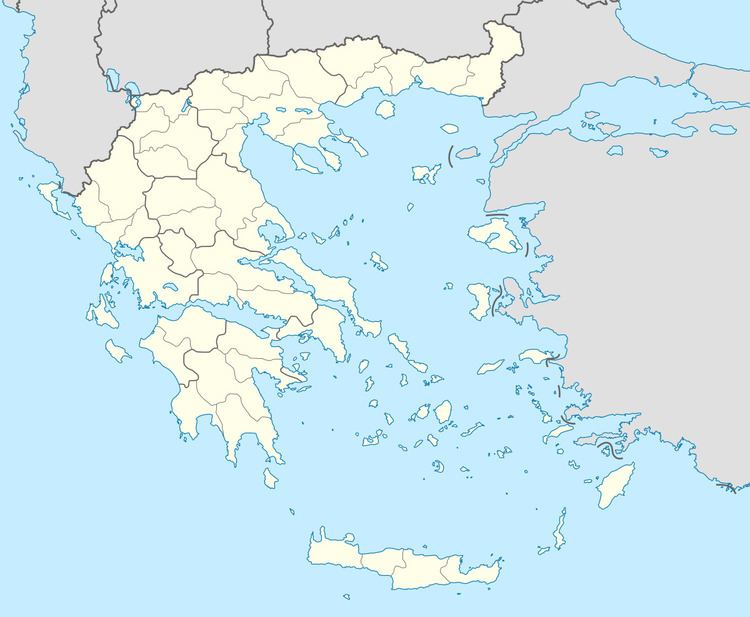Time zone EET (UTC+2) Vehicle registration KM Area code 27230 | Elevation 190 m (620 ft) Postal code 240 01 Local time Friday 9:16 PM Municipality Pylos-Nestor Municipal unit Pylos | |
 | ||
Weather 11°C, Wind NW at 10 km/h, 80% Humidity | ||
Iklaina (Greek: Ίκλαινα) is a historic village in the municipal unit of Pylos, Messenia, Greece. It is situated in low hills, approximately 10 km to the northeast of the town of Pylos. Important archaeological remains of the Late Bronze Age (ca. 1600-1100 BC) period have been brought to light through excavations and surface survey by the Athens Archaeological Society and the University of Missouri–St. Louis under the direction of Professor Michael Cosmopoulos. The finds include an early Mycenaean palace, giant terrace walls, murals, an advanced drainage system, and a clay tablet from between 1450 and 1350 B.C. featuring an early example of Linear B writing. Other periods represented are the Late Classical and the Byzantine.
Contents
Map of Iklaina 240 01, Greece
Archaeological research in detail
The systematic excavation at Iklaina started in 2006, after a survey which had taken place in the five previous years.The archaeologists located residential buildings, dating to the end of the MH/ beginning of LH period, and to the LK I/II period.
The discovery of a large terrace, 23 x 8 m, built in the Cyclopean building system using massive blocks of stone, proved to be particularly important. The “Cyclopean Terrace”, as it was called, supported a large building, of the “megaron” type, with possibly two or even three storeys (called the Cyclopean Terrace Complex). Although this building had been partly destroyed, the excavations revealed some of its surviving parts and defined its architectural form: it was a building complex consisting of three wings, built around a central rectangular court. The movable finds prove that the last phase of that building was the LH IIIA2 period, i.e. about 1330 B.C.
During the 2009 excavation period, over 2500 fragments of wall-paintings came to light. A striking fragment is that depicting a ship with three human figures and dolphins, as well as a procession consisting of female figures.
This building complex on the Cyclopean Terrace was completely destroyed in LH IIIA2 period and was never built again. New building activity was carried out in the northern part of the settlement, where the so-called Megaron Γ was constructed. This appears to have at least 3 rooms and a porch. A hearth and storage rooms were found. In the buildings of the southern side parts of a particularly elaborate sewage system were also discovered.
The most important discovery, however, took place in a dump next to the central sewer, which contained burnt shards. There was discovered a fragment of a Linear B tablet, which was written on both sides. This tablet dates to the LHIIB-IIIA1 period, i.e. around 1450-1400 B.C., which makes it the earlier Mycenaean tablet of mainland Greece.
Furthermore, during the excavation period of 2012, an open-air sanctuary was discovered, also unique for that period and for mainland Greece in general. Another important find of the same excavation period was a large rectangular building (Building X), in front of which passed a paved street, of an exceptionally elaborate construction, possibly a processional street, which led the way from the houses of the settlement to the complex of the Cyclopean Terrace.
On the basis of the available evidence, it appears that Iklaina was a powerful Mycenaean centre in the LH IIB/ IIIA1 period. The large building complexes, the rich finds, the refined taste and the advanced level of technical knowledge of the inhabitants, attest to the fact that Iklaina could have been the capital of an autonomous small state, which clashed with a neighbouring state at Ano Englianos; the latter subdued the former, and demoted it to a secondary capital of one of the provinces of Pylia.
The final destruction of the site seems to have occurred at about 1200 B.C.
